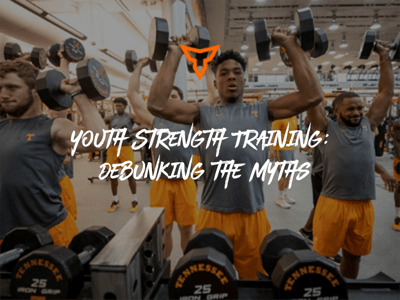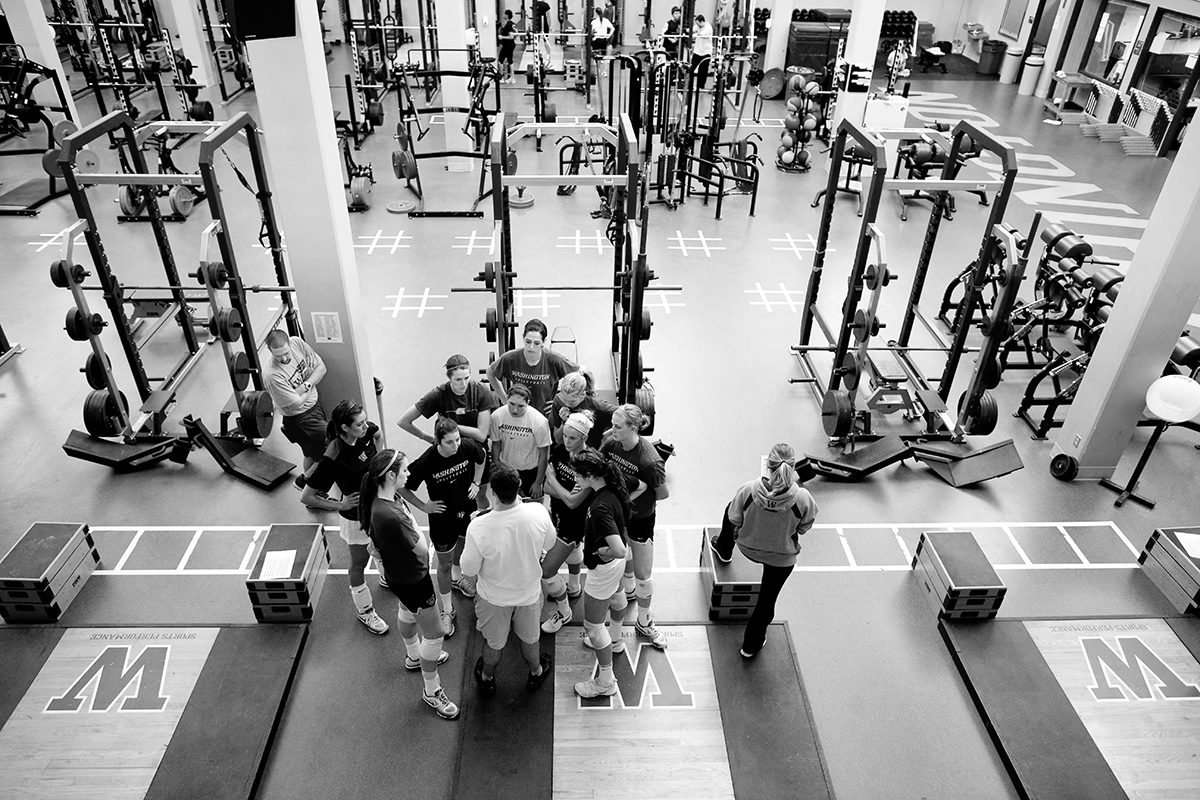Your Youth Athlete Needs Strength Training
The belief that strength training can stunt growth in children and adolescents is a long-standing myth that has discouraged many young athletes and their parents from incorporating resistance exercises into their training. However, scientific evidence and expert opinion increasingly suggest that this is a misconception. This article delves into the myth, examines the scientific evidence, and highlights the actual effects of strength training on youth development.
The Origin of the Myth
The myth that strength training hinders growth in youth stems from concerns about injuring growth plates (the areas of cartilage near the ends of long bones where bone growth occurs in children and adolescents). It was believed that lifting weights or resistance training could damage these plates, leading to stunted growth. While valid in the context of injuries, this concern has been misapplied in the general practice of strength training.
Understanding Growth Plates
Growth plates, also known as epiphyseal plates, are crucial to childhood and adolescent development. They are the last portion of bones to harden, making them more susceptible to fractures. However, injuries to growth plates are typically the result of acute trauma and not the result of controlled, moderate-strength training.
The Science Behind Strength Training and Growth
Numerous studies have shown that strength training, when properly supervised and tailored to the individual’s age and development stage, does not adversely affect growth plate health or overall growth. It has several benefits:
Increased Bone Density: Strength training can enhance bone density and strength, which is crucial when individuals are most susceptible to bone accumulation.
Improved Muscle Strength and Endurance: Just like in adults, strength training in youth improves muscle strength and endurance, aiding overall athletic performance.
Enhanced Joint Health: Controlled and guided strength training can lead to stronger ligaments and tendons, contributing to improved joint health and stability.
Injury Prevention: By strengthening muscles and joints, young athletes can lower their risk of sports-related injuries.
The Role of Proper Supervision and Technique:
Proper supervision and technique are key to safe and effective strength training for youth. It’s crucial that:
1. Exercises are age-appropriate.
2. There is a focus on technique rather than the amount of weight lifted.
3. Training intensity is increased gradually.
4. Programs are designed and supervised by qualified professionals.
Debunking Common Misconceptions
Myth: Lifting weights is not safe for children.
Fact: The American Academy of Pediatrics, among other organizations, supports strength training for kids provided it is age-appropriate and supervised.
Myth: Strength training is only for young athletes.
Fact: Strength training can benefit all children and adolescents, not just those participating in sports, by improving overall health and fitness.
Recommendations for Youth Strength Training
Start with Body Weight: Young beginners should start with bodyweight exercises before gradually introducing light weights.
Focus on the Entire Body: Programs should target all major muscle groups.
Prioritize Form Over Weight: Emphasis should be on learning proper form and technique, not on lifting heavy weights.
Incorporate Variety: To keep training enjoyable and effective, a variety of exercises should be included.
The Impact of Nutrition and Rest
Adequate nutrition and rest are as crucial as the training itself. A balanced diet rich in essential nutrients and sufficient rest are vital for recovery and growth.
Monitoring and Adapting Programs
Regular monitoring of strength training programs is essential to ensure they remain safe, effective, and appropriate for the child’s development stage. Adjustments should be made as the child grows and develops.
Strength training, contrary to the antiquated myth, does not hinder growth in youth when conducted responsibly. With proper guidance, it can be a safe and beneficial part of a young athlete’s development contributing to improved strength, better athletic performance, and reduced injury risk. As with any exercise program, the key lies in the appropriate design, supervision, and execution tailored to the individual needs and developmental stages youth.
References:
Donaldson, A., Callaghan, A., Bizzini, M., Jowett, A., Keyzer, P., & Nicholson, M. (2018). A concept mapping approach to identifying the barriers to implementing an evidence-based sports injury prevention program. Injury Prevention, 25, 244-251.
Paraskevopoulos, E., Pamboris, G., & Papandreou, M. (2023). The Changing Landscape in Upper Limb Sports Rehabilitation and Injury Prevention. Sports, 11.
Turnagöl, H. H., Koşar, Ş., Güzel, Y., Aktitiz, S., & Atakan, M. (2021). Nutritional Considerations for Injury Prevention and Recovery in Combat Sports. Nutrients, 14.
Ok, A., & Lee, Kwang-jin. (2021). Sports Injury Prevention and Functional Training: A Literature Review. Asian J Kinesiol, 23(1), 46-52.
Stephenson, S. D., Kocan, J. W., Vinod, A., Kluczynski, M. A., & Bisson, L. J. (2021). A Comprehensive Summary of Systematic Reviews on Sports Injury Prevention Strategies. Orthopaedic Journal of Sports Medicine, 9.
Benjaminse, A., & Verhagen, E. (2021). Implementing ACL Injury Prevention in Daily Sports Practice—It’s Not Just the Program: Let’s Build Together, Involve the Context, and Improve the Content. Sports Medicine (Auckland, N.z.), 51, 2461-2467.
Mącznik, A., Mehta, P., & Kaur, M. (2021). Can We Go Online for Sports Injury Prevention? A Systematic Review of English-Language Websites with Exercise-Based Sports Injury Risk Reduction Programmes. Sports Medicine - Open, 7.
Mendonça, L., Schuermans, J., Wezenbeek, E., & Witvrouw, E. (2021). Worldwide Sports Injury Prevention. International Journal of Sports Physical Therapy, 16, 285-287.
Ross, A. G., Donaldson, A., & Poulos, R. (2020). Nationwide sports injury prevention strategies: A scoping review. Scandinavian Journal of Medicine & Science in Sports, 31, 246-264.
Bolling, C., Barboza, S. D., van Mechelen, W., & Pasman, H. (2019). Letting the cat out of the bag: athletes, coaches, and physiotherapists share their perspectives on injury prevention in elite sports. British Journal of Sports Medicine, 54, 871-877.
Walzik, D., Joisten, N., Zacher, J., & Zimmer, P. (2021). Transferring clinically established immune inflammation markers into exercise physiology: focus on neutrophil-to-lymphocyte ratio, platelet-to-lymphocyte ratio, and systemic immune-inflammation index. European Journal of Applied Physiology, 121, 1803-1814. Link to Source
Physiology, E., Cardiovascular Research Center, D., Jenkins, N., Padilla, J., Boyle, L. J., Credeur, D., Laughlin, M., & Fadel, P. (2013). Disturbed Blood Flow Acutely Induces Activation and Apoptosis of the Human Vascular Endothelium. Hypertension, 61, 615–621. Link to Source
Subscribe to our blog
Subscribe to receive the latest blog posts to your inbox every week.
Related posts

Youth Strength Training: Debunking the Myths

5 Reasons to Use Undulating Periodization for High School Athletes


